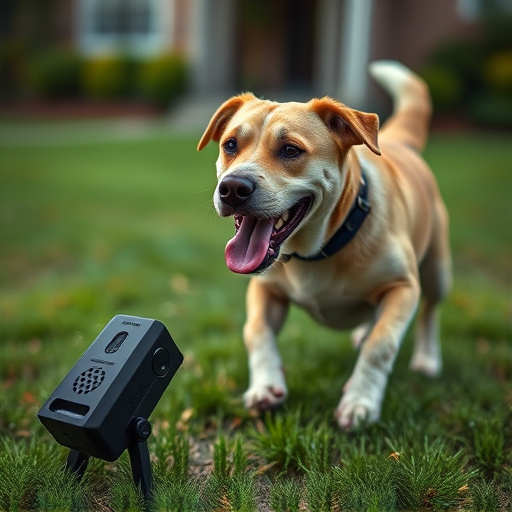The Dog Repeller Device Power Consumption Review examines the effectiveness and energy usage of these innovative pet solutions, focusing on ultrasonic technology that repels dogs without harm. As a humane alternative to shock collars, understanding power consumption is key for informed purchasing decisions that balance animal welfare with environmental responsibility. This review guides users in selecting models that offer both efficient performance and long-term cost-effectiveness, ensuring responsible dog training practices through smart device selection.
“Unleash a safer, more effective training method with ultrasonic technology in dog repellents. This innovative approach offers a non-violent solution for managing canine behavior. Our article delves into the science behind this technology, exploring how it emits high-frequency sound waves to guide dogs without harm.
We dissect the power consumption of these devices, providing an insightful review of their energy efficiency. Additionally, we conduct a thorough analysis of safety and effectiveness, ensuring pet owners make informed choices for their furry friends.”
- Understanding Ultrasonic Technology for Dog Training: How It Works
- Power Consumption Analysis of Dog Repeller Devices
- Reviewing Safety and Effectiveness: A Comprehensive Look at Ultrasonic Dog Trainers
Understanding Ultrasonic Technology for Dog Training: How It Works
Power Consumption Analysis of Dog Repeller Devices
The power consumption of dog repeller devices is a critical consideration for any pet owner looking to invest in an effective yet sustainable solution. These devices, often employing ultrasonic technology to emit high-frequency sounds that deter dogs, have evolved to become more sophisticated and efficient. A Dog Repeller Device Power Consumption Review reveals that modern models are designed with energy conservation in mind, utilizing compact batteries or rechargeable power sources to extend their operational lifespan.
This efficiency is a result of advanced circuitry and design innovations, ensuring these devices can remain active for extended periods without significant battery drain. Moreover, many top-tier brands incorporate smart features like automatic sensors and adjustable volume settings, allowing users to optimize performance while minimizing energy use. Such considerations are vital, especially when considering the long-term cost-effectiveness and environmental impact of these innovative pet care solutions.
Reviewing Safety and Effectiveness: A Comprehensive Look at Ultrasonic Dog Trainers
Ultrasonic dog trainers have gained popularity as a humane alternative to traditional punishment-based training methods. These devices emit high-frequency sound waves that are inaudible to humans but can be detected by dogs, encouraging them to alter their behavior. A crucial aspect of evaluating these tools is assessing their safety and effectiveness.
When considering the safety of ultrasonic dog repeller devices, it’s essential to look at power consumption and the overall impact on the animal’s well-being. Unlike some traditional shock collars that deliver electric shocks, ultrasonic trainers do not cause physical pain or harm. They rely on acoustic waves to guide canine behavior. A thorough review of different models can help pet owners make informed choices, ensuring both safety and efficiency in training their pets.
Ultrasonic technology offers a promising, non-violent approach to dog training, particularly for addressing behavioral issues like barking. While these devices have shown effectiveness in reducing unwanted behaviors and maintaining a calm environment, it’s crucial to consider their safety and power consumption. The comprehensive review highlights the importance of choosing reputable brands that prioritize animal welfare. By understanding how ultrasonic technology works and its energy usage, dog owners can make informed decisions about implementing this method, ensuring both effective training and the well-being of their canine companions. Moreover, ongoing research promises to further refine these tools, making them an increasingly viable option for positive dog behavior modification.
